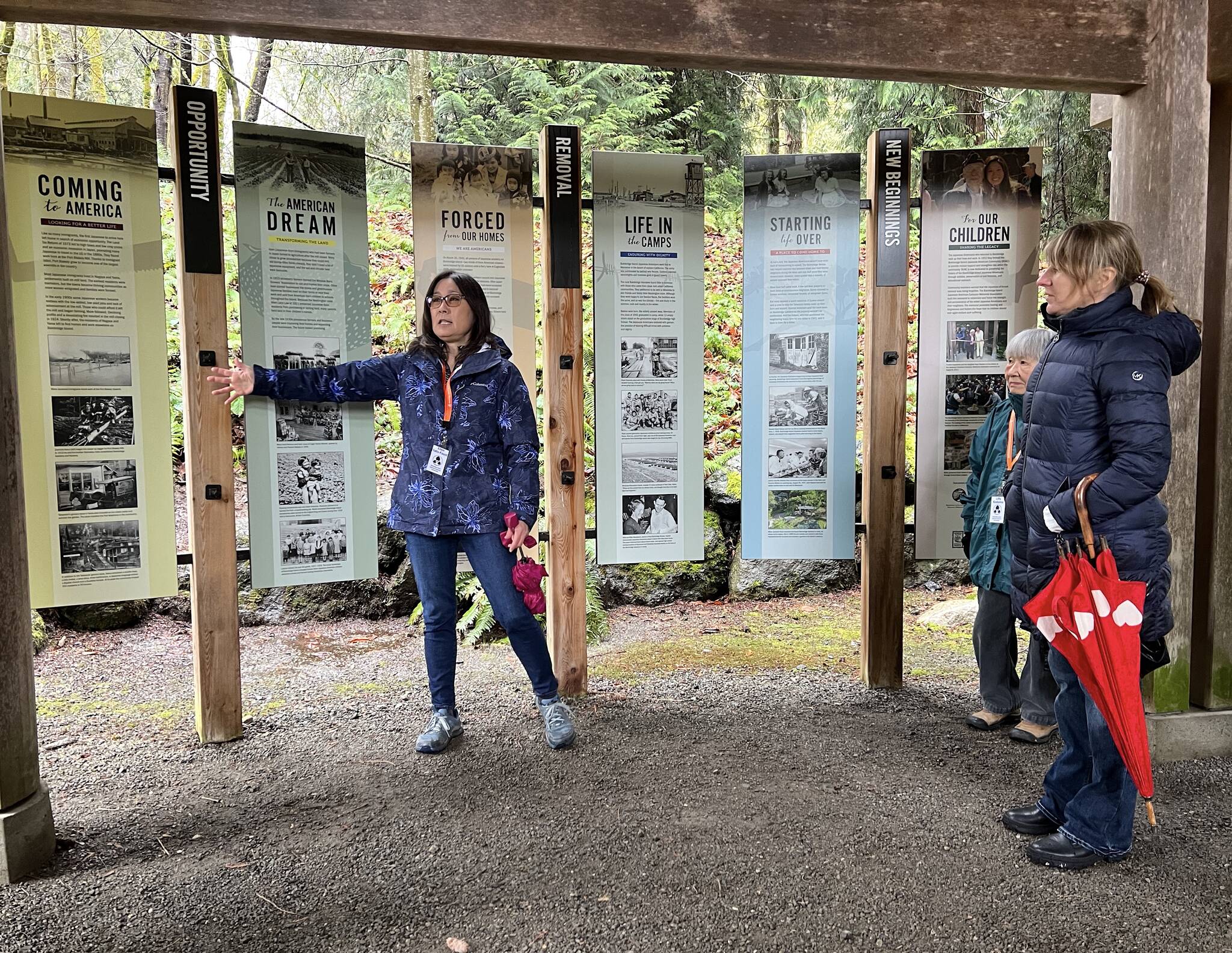Visitors come from all over the world to see the Bainbridge Island Japanese American Exclusion Memorial. They come for different reasons: Some to remember family, others to seek deeper meanings.
Recently, groups from Africa and Ukraine toured the site. “We’ve had groups from Japan, South Korea and Vietnam in the past, but we have never had groups from Africa or Ukraine,” executive director Ellen Sato Faust said. “I am not sure how they are hearing about the memorial or why we have such an influx of interesting new visitors.”
On a cold, rainy morning, Lilly Kitamoto Kodama shared her personal story at the memorial with a group of Ukrainian museum curators from Kyiv during a guided tour and said she felt a connection with Ukrainians who are at war and have family in Russia.
The Ukrainians visited the memorial by invitation from the U.S. State Department through the International Visitor Leadership Program while on a three-week tour to study U.S. museums and memorials that deal with “difficult history” to tell the story of the Holodomor genocidal famine perpetrated by Russian Oppression in 1932-33.
Interpreter Peter Voitsekhovsky said the genocidal policy has returned with Russia’s military invasion and war crimes in Ukraine. “This makes our study program topical for Ukraine today. It can help Ukrainians develop new projects of memorializing their history.”
Faust and Kodama shared the history of Japanese Americans on the island and their lives in the internment camps.
Kodama said the BI Japanese American community was the first to be removed and taken to prison “We were a small enough community that they could take them and imprison them in one place in California. The advantage of being taken away first was that we went directly into barracks, and we also got a lot of press coverage.”
When she spoke about how BI treated the Japanese, she said it was unusual because everyone knew each other. The Bainbridge Review newspaper owners wrote several editorials about how the exclusion was unconstitutional. It was unusual because most of the major newspapers in the country were clamoring to imprison them.
Ukrainian interpreter Valery Yegorov pointed out the newspaper’s actions. “That’s quite the example of democracy.”
The visitors learned that the memorial was created through a community effort with national support.
“People were amazed that it wasn’t a bigger part of our education and community remembrance,” said Faust, whose father was incarcerated during the war and graduated from high school in the camps.
Upon their release, a higher percentage of Japanese returned to BI than any other place in the nation because the community took care of their farms, and they had something to return to. “The community paid taxes on behalf of people who were gone. Whereas a lot of other places, houses were taken, farms were taken, businesses were taken,” Faust said.
Faust pointed out a photo of a business that still exists today and noted that in other places, the Japanese were not as fortunate. Many families split apart because they didn’t have much to return to. Only one Bainbridge family lost their home because they did not tell anyone they could not pay the taxes.
At the end of the tour, Yana Hrynko, head of the Exposition Department for the National Museum of the Holodomor-Genocide in Kyiv, Ukraine, said she liked the location of the memorial because it reminded her of a Jewish memorial in Kyiv that is in a natural setting as well.
The curators took photos and examined the significance of the memorial’s shape. “It symbolizes that life does not take you in a straight path. There are twists and turns,” Faust said.



